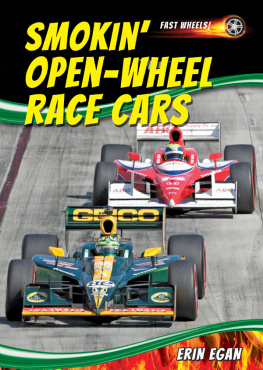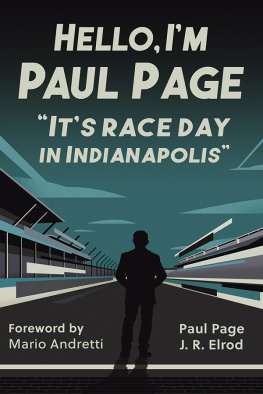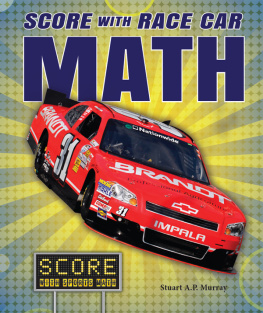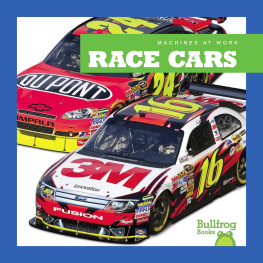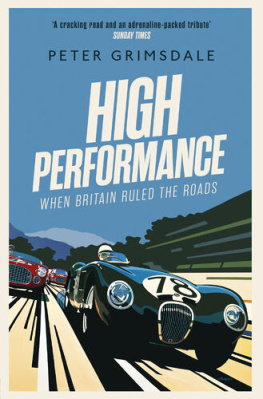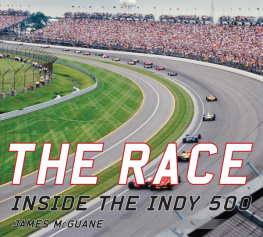SMOKIN OPEN-WHEEL RACE CARS
Welcome to the world of open-wheel racing, the most popular kind of car racing there is! Learn about the awesome cars and the daring drivers of Formula One and IndyCar racing. They are the stars of the biggest and most famous races around the world, including the Indianapolis 500.
About the Author
ERIN EGAN is a writer and editor living in Richmond, Virginia. She has written for many magazines, including Sports Illustrated for Kids, Parents, and Fitness


Image Credit: Natursports/Shutterstock.com
Kamui Kobayashi is shown at the Circuit de Catalunya in Barcelona, Spain. He is going so fast that his head feels five times heavier than normal!
It is May 27, 2012, at the Indianapolis Motor Speedway, the largest sports arena in America. More than 300,000 people roar with excitement as sleek, colorful cars speed around the track during the Indy 500. The powerful race cars hug the ground as they whip around the steeply banked corners. Their engines fill the air with an ear-rattling buzz that sounds like a huge swarm of killer bees. The cars are a blur as they travel at more than 200 miles per hour (mph). Even at those high speeds, the cars are inches apart as they head around the final turn, with the finish line dead ahead. At the last moment, one car jumps ahead and everyone is on their feet as the checkered flag is wavedDario Franchitti, has won the worlds most famous car race!
It was not any ordinary victory. Franchitti was battling his teammate, Scott Dixon, and another driver, Takuma Sato during the last five laps of the race. Takumas tires rubbed Darios and it sent him into the wall. Franchitti and Dixon continually kept stealing the lead from one another until the final lap when Franchitti did not look back. It wasnt just the race that was extraordinary, it was the whole day. This was the first Indy 500 since the death of Dan Wheldon, the prior years winner of the prestigious race. The drivers who finished first, second, and third, Dario Franchitti, Scott Dixon, and Tony Kanaan, were Dans best friends.
The lean, mean race cars in the Indy 500 are known as open-wheel racers. They are called open wheel because there are no fenders covering the tires as on regular passenger cars. They are lightweight and aerodynamic (designed to cut cleanly through the air), and have extremely powerful engines. They average speeds from 187 to 220 mph. Open-wheel vehicles are raced in Formula One, Indy Racing League, and Champ Series races.
The cars hold a single driver in an open cockpit. Formula One, Indy, and Champ cars also have their engines in the back. By comparison, the cars of NASCAR have their engines in the front, and their drivers are enclosed inside the car.
The formula in Formula One is the set of rules all of its drivers and cars must follow. Formula One is extremely popular around the world, especially in Europe. Its drivers come from all over the globeEurope, North and South America, and Asia. They are as famous as rock stars, and hundreds of thousands of die-hard fans pack the tracks on race weekends worldwide. The average weekend attendance for a Formula One race is roughly 300,000 people. That is nearly triple the number of people who attended Super Bowl XLI in 2011, when 103,219 people attended the game. Television ratings top more than 100 million viewers worldwide.

Image Credit: Efecreata Photography/Shutterstock.com
Wheels are not the only things exposed on an open-wheel race car. The driver, in this case Fernando Alonso, sits in an open cockpit.
Anywhere from seventeen to twenty races make up the Formula One season. In each race, twenty-four drivers compete on specially designed racecourses or blocked-off city streets. Races are held all around the world. Drivers earn points in each race depending on how they finish, and the driver with the most points at the end of the season is the champion.
Drivers race for teams, which are often owned by car companies such as Ferrari, Renault, Mercedes, Lotus, and BMW. These sponsors pay for the car as well as salaries for the drivers and crew members. The sponsors names are painted on the car. The more money they pay, the bigger their name appears on the car. Sponsors want fans to know their names so they will buy their products. After all, running a Formula One team is not cheapit can cost from $120 million to over $400 million a year.

Image Credit: Sandra R. Barba/Shutterstock.com
Every sport has its share of superstars, but there always seems to be one or two of them who shine brighter than all the rest. Basketball has Michael Jordan. Baseball has Babe Ruth. Hockey has Wayne Gretzky. And Formula One racing has Michael Schumacher as its super-superstar.
Schumacher won seven Formula One championships in his careerthe most of any driver in history. Five of those were won while racing for the Ferrari team.
When Schumacher joined the team in 1996, Ferrari had not won a championship since 1979. In just a few years, the German driver turned the team around. With Schumacher at the wheel, Ferrari won five straight titles, from 2000 to 2004.
Until his second retirement following the 2012 season, Schumacher was one of the worlds most famous athletes. His outstanding success on the track, including records for most race wins and most season championships, helped him earn more than $80 million a year in his prime.
Formula One was once officially known as Grand Prix racing. Grand Prix is a French term for large prize. The first Grand Prix race was held in Le Mans, France, in 1906, but it was only open to French drivers. The first Grand Prix World Championship was held in 1925, but the first true Formula One championship was run in 1950.
In the 1950s, Formula One cars were like regular passenger cars, with the engine in front. Big changes in car design came in the 1960s and 1970s. By 1961, all Formula One car engines were placed behind the driver. Airfoils, or wings, appeared on the cars in the 1970s and gave them more stability.

Image Credit: Efecreata Photography/Shutterstock.com
An image of the south view of the Grand Prix of Europe in Valencia, Spain.
Open-wheel racing came to the United States in 1909. The biggest and most popular of these races is the Indianapolis 500 (called the Indy 500 for short), held in Indiana. The first Indy 500 was held in 1911. The style of cars on the circuit became known as Indy cars, after the famous race.
Indy cars were similar to passenger cars in the early 1900s. Cars had two seats, one for the driver and one for a mechanic. The design of the cars began to change in the 1960s to look more like todays Formula One cars.
Safety features also improved after three drivers and a crew member died as a result of crashes at the Indy 500 in 1972 and 1973. Since then, safety features have constantly been updated to help keep drivers, crew members, and spectators from harm.

